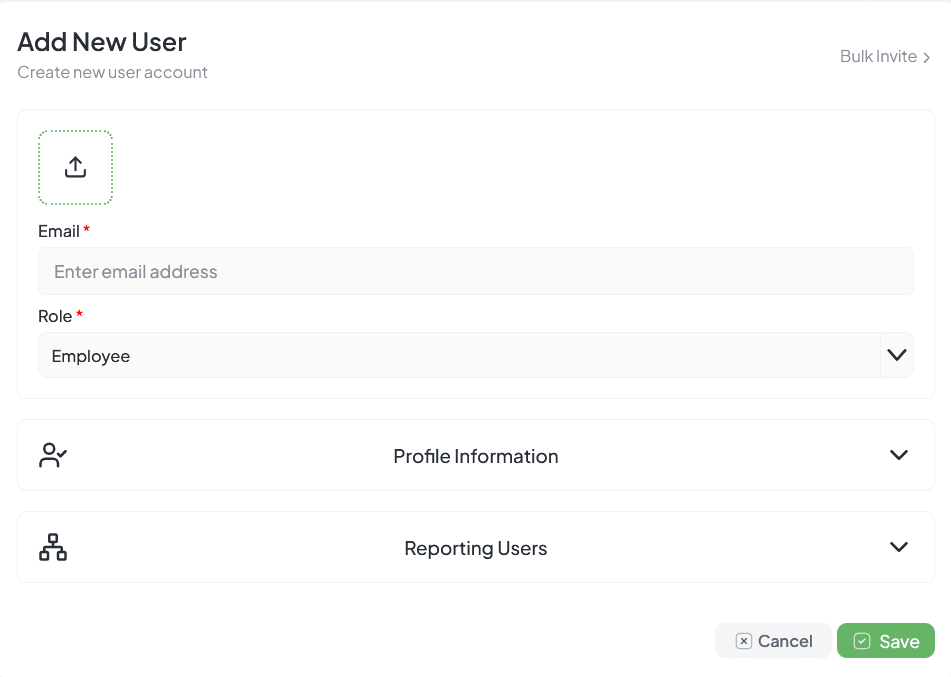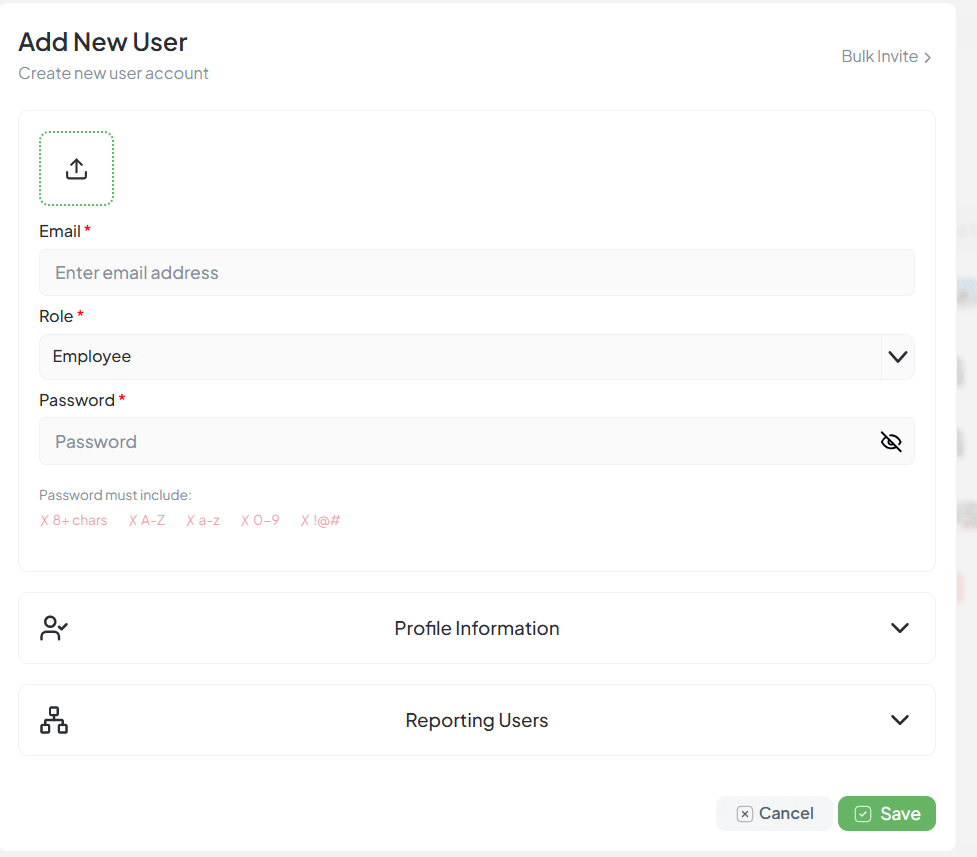User Management – My Team
The User Management section under My Team allows administrators and team leads to manage user roles, permissions, and departmental associations. It helps maintain structured team hierarchies and streamline collaboration across projects and tasks.
Purpose
To add new users (employees, managers, or admins) to the system under two deployment models:
SaaS Model: Email-based invitation to join the organization.
On-Premise Model: Manual setup of user credentials by an administrator.
Organogram: Visual representation of organizational hierarchy showing team and reporting structure.
Introduction
The User Management System in Hidesc allows organizations to onboard, manage, and structure users seamlessly. It supports both deployment models:
SaaS Model: Cloud-based deployment where users receive system-generated invites and set their own passwords.
On-Premise Model: Self-hosted deployment where admins manually assign passwords during user creation.
This dual-approach ensures flexibility for organizations operating in diverse IT environments.
Core Features
Add New User: Add individual users with role, profile information, and reporting manager.
Bulk Invite: Invite multiple users at once with a single role assignment.
Profile Information: Capture essential employee details like name, employee code, and contact information.
Reporting Users: Define reporting lines to integrate with the Organogram.
Role & Permission Mapping: Assign system roles (Employee, Team Lead, Manager, Owner, Admin) with tailored access.
SaaS Model – User Add Flow

SaaS Model user creation interface
Step 1: Open Add New User
Navigate to Users → Add New User and enter required details:
- Email* – Unique user login ID
- Role* – Employee, Manager, Team Lead, Admin, etc.
Step 2: Profile Information
Enter user details:
- First Name, Last Name
- Employee Code
- Contact Number
- Custom Fields (phone, time, date, text, etc.)
Step 3: Reporting Users
Select a Reporting Manager and Team. Toggle “Immediate Reporting” if the manager is the direct head.
Step 4: Save User
Click Save. The system automatically sends an invite email with login setup instructions.
The user sets their own password during the first login.
Premise Model – User Add Flow
The premise method is almost identical to the SaaS model, with one key difference — the admin sets the password during user creation.

Premise Model user creation interface
Step 1: Open Add New User
Navigate to Users → Add New User and enter:
- Email*
- Role*
- Password* — must follow security policy (min 8 chars, includes uppercase, lowercase, number, special char)
Step 2: Profile Information
Same as SaaS — enter First Name, Last Name, Employee Code, Contact Info, etc.
Step 3: Reporting Users
Same as SaaS — select Reporting Manager and Team structure.
Step 4: Save User
Click Save — the account is created immediately with an admin-defined password.
The user logs in using these credentials.
Key Difference
Unlike the SaaS model where users receive an email invite and set their own password, the Premise Model requires the admin to define the password during creation. This password must comply with the enforced security policy.
Bulk Invite (SaaS/Premise)
The Bulk Invite feature allows admins to quickly onboard multiple users by sending them invitation emails. These users can join the organization system by filling in their profile details through a secure signup link.
The Bulk Invite option is available in the SaaS Model — located at the top-right corner of the user management screen.
This feature lets the admin upload multiple email addresses at once and assign them a common role and department for faster onboarding.
Profile Page Overview
Profile Page Tabs
- Profile: Manage personal information and basic user details.
- Work Profile: Update role, department, and professional details.
- Security: Change password and configure security options.
- Notification: Manage communication preferences and alerts.
Benefits of User Management
- Clear accountability for every task.
- Simplified task delegation and reporting.
- Secure, role-based data access.
- Easy onboarding and offboarding process.
- Accurate workload distribution across teams.